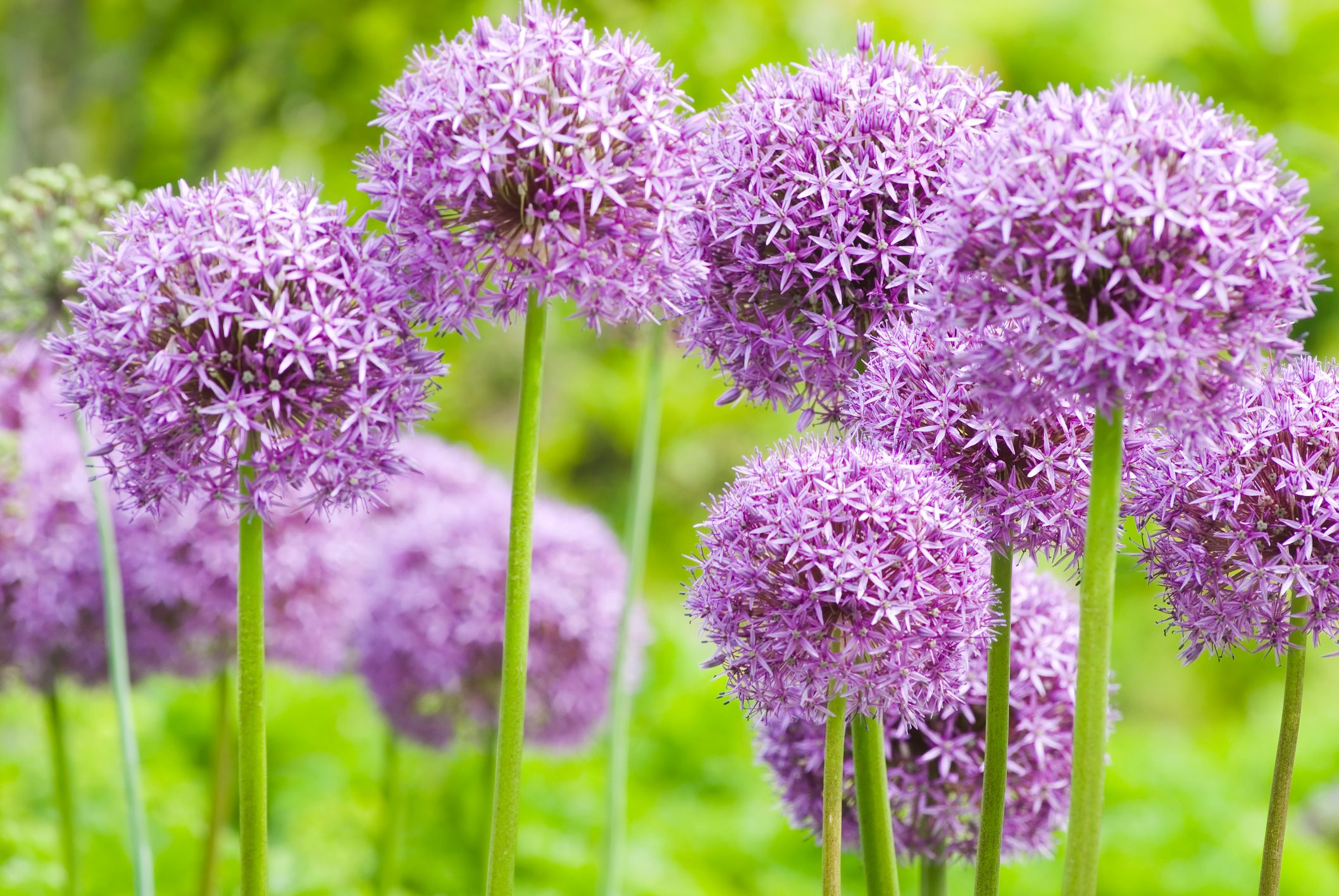Commonly referred to as alliums, ornamental onions can add pops of purple, pink, and white to your garden after daffodils and tulips fade.

The Best Way to Grow Ornamental Onions

When my tulips and daffodils are fading, up pop the alliums (aka ornamental onions) with big balls of purple flowers. They provide color in my garden before the first big flushes of summer flowers appear.
“Ornamental onion is a striking ornamental plant valued for its unusual broad leaves,” says botany expert Anastasia Borisevich. “The plant’s relatively short stem, 4-12 inches tall, often partially buried in the ground, is shorter than the leaves. The spherical umbels display lilac to pink flowers with a mild fragrance.”
Additionally, they come back every year. Even the allium bulbs I accidentally planted upside down have been returning and blooming for at least 10 years!
On This Page
What Are Ornamental Onions?
Ornamental onions are relatives of the onions we eat. We call them “ornamental” because we grow them for their flowers, though “allium” is the name you’re likely to see when searching for them online or in stores. They’re generally hardy in U.S. Department of Agriculture Plant Hardiness Zones 4 through 9.
Types of Ornamental Onions
Most ornamental onions are sold as bulbs and planted in the fall. Here are some of my favorites:
- Globemaster: Features large purple balls of tightly packed purple flowers on stems that rise two to three feet.
- Mount Everest: White flowers on sturdy stems.
- Schubertii: Looks like a sparkler with extra long florets covered in purplish-red blooms.
Others come as potted plants:
- Millenium: Blooms later in the summer and only grows about 12 inches tall. Hardy in USDA Zones 4 through 8.
- Serendipity: Known for its pinkish flowers, this grows up to 15 inches. Also hardy in Zones 4 through 8.
Can You Eat Ornamental Onions?
No. Technically, they’re edible. But they’re bred for their flowers, and the bulbs won’t taste very good.
When to Plant Ornamental Onions
If buying bulbs, plant in the fall with tulips and other bulbs. If you buy them in a pot, plant immediately in spring or early summer.
How To Grow and Care for Ornamental Onions
Once planted, these blooms are easy to care for.
Light
Ornamental onions prefer full sun but will tolerate some afternoon shade, especially in warmer climates.
Soil and water
They grow best in well-drained soil. Purchased bulbs won’t need additional watering. For potted plants, water when planting and then only during dry spells. Ornamental onion bulbs can rot if the soil is too wet.
Fertilizer
Fertilizing your alliums is not necessary in most gardens.
Pest control
Pests usually leave ornamental onions alone. Same with deer and rabbits.
Deadheading
Many ornamental onions produce seeds and self-sow in a garden. To avoid this, remove flowers once they’ve faded. This also encourages the plants to send energy down to the roots to grow bulbs for the next year’s flowers. Also, after flowering, cut back foliage once it dies.
Digging and dividing
Many alliums, especially Millenium and Serendipity, form clumps that can be dug up and divided. The best time to do this is in spring while foliage is growing, but before flowering. Dig up a clump, separate the individual bulbs, then replant.
Why Does My Ornamental Onion Foliage Start Dying Before Flowers Appear?
One of the complaints about alliums, especially those planted as bulbs, involves the foliage yellowing and dying back before flowers appear. This is normal. If yours do this, consider planting other perennials around them to hide the foliage and spotlight the blooms.
Why Can’t I Have Ornamental Onions Shipped to My State?
Because of state agricultural restrictions, most ornamental onion bulbs cannot be shipped to Idaho or some counties in Washington State. This is to avoid bringing in unwanted onion plant diseases. If you live in one of these areas, purchase alliums from a local source whose bulbs and plants have been inspected and are disease-free.
FAQs
Are ornamental onions beginner-friendly?
Yes, ornamental onions are great for beginner gardeners, especially those who are forgetful about watering. “Ornamental onions are exceptionally drought-tolerant and have been recognized as an outstanding plant for the Pacific Northwest,” says Borisevich.
Are ornamental onion pet-safe?
Unfortunately no, ornamental onions are not pet-safe. So be sure to keep them out of reach of your curious animals. “All parts of the plant are toxic to humans and animals, causing symptoms such as nausea, vomiting, and diarrhea,” says Borisevich.
About the Expert
- Anastasia Borisevich is a resident plant expert for the Plantum app, which helps users identify plant species, diagnose their conditions and offers expert advice on improving plant care.

















